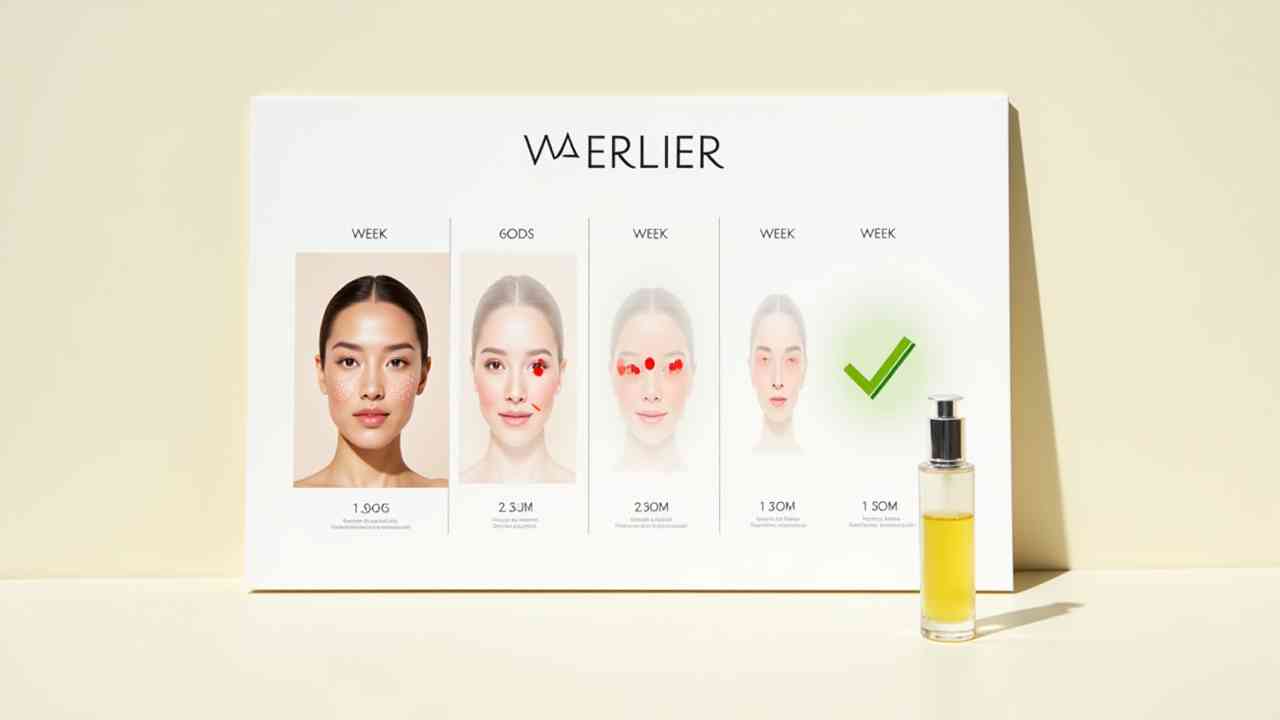
⏳ How Long Does Skin Purging Last? A Skincare Timeline
⏳ How Long Does Skin Purging Last? (A Skincare Timeline) ⏳
It is one of the most frustrating moments in skincare. You start a new active ingredient, like a retinoid or an acid. You are excited for clear, glowing skin. But instead, you are met with a fresh wave of breakouts. This is likely "skin purging."
This leads to the most pressing question. How long does skin purging last? You want to know when you will see the light at the end of the tunnel. Understanding the timeline can help you stay patient and consistent. It is a sign that the product is working.
This guide will provide a clear timeline for skin purging. We will explain the science behind it. We will also give you tips to get through it. Let's explore this temporary but challenging phase. ✨
🤔 What is the Typical Duration of a Skin Purge?
While it can vary slightly from person to person, there is a general timeframe. A typical skin purge will last for about four to six weeks. This might seem like a long time. However, there is a scientific reason for this duration.
Why does it last that long?
The 4-6 week timeline is based on your skin's natural cell turnover cycle. It takes about 28 days for a new skin cell to be born at the deepest layer of your epidermis. That cell then travels up to the surface and is eventually shed.
Active ingredients like retinoids speed up this entire process. They are forcing all the underlying clogs (microcomedones) to come to the surface much faster than they normally would. The purge is your skin "clearing out" all that hidden congestion. This process takes one to two full skin cycles to complete.
⚠️ How Can You Tell if it's a Purge and Not a Bad Reaction?
This is a critical distinction. You should push through a purge. You must stop using a product that is causing a bad reaction. Here is how to tell the difference.
A purge happens in the areas where you typically break out. The pimples usually come to a head and heal faster than your normal acne. It is caused by ingredients that increase cell turnover. This includes retinoids (retinol), AHAs (glycolic acid), and BHAs (salicylic acid).
A bad reaction can cause breakouts in new areas. The pimples might be an itchy rash or deep, painful cysts. This can be caused by any new product that is clogging your pores or irritating your skin. If you suspect a bad reaction, stop using the product immediately.
💡 How Can You Help Your Skin Get Through the Purge?
So, you have determined it is a purge. Now what? The key is to be as gentle and supportive to your skin as possible. Your goal is to manage the irritation. This will help you get through the phase with minimal discomfort.
1. Simplify Your Routine: Cut out all other active ingredients. Your routine should be simple: a gentle cleanser, a hydrating moisturizer, and sunscreen. "Baby" your skin during this time. 🛡️
2. Start Slow: When you first introduce an active, do not use it every day. Start with just 1-2 times per week. This allows your skin to adapt slowly and can make the purge less intense.
3. Do Not Pick: This is the most important rule. Picking at the purge will only cause more inflammation and can lead to scarring.
4. Moisturize Well: A good moisturizer is essential. It will help to support your skin's protective barrier. This reduces redness and irritation.
⭐ What Should You Do if the Purge Lasts Longer Than 6-8 Weeks?
While 4-6 weeks is average, some purges can last a little longer. However, if you have passed the 8-week mark and your skin is not starting to clear up, it is time to re-evaluate. It may be that the product is simply too strong or not right for your skin.
This is the point where you should consult a dermatologist. They can properly assess your skin. They can help you determine if you should continue with the product or try a different approach. Remember, patience is key, but you also need to listen to your skin. 💧